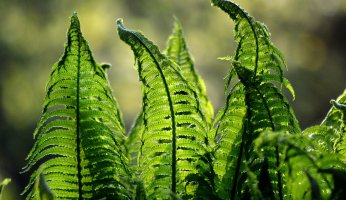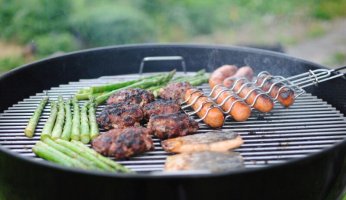10 Edibles For This Spring, Found Around The Midwest
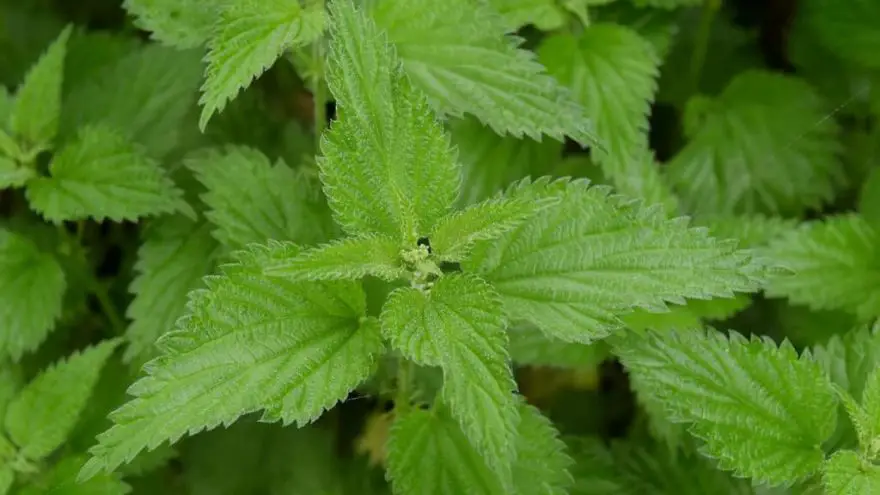 10 Edibles For This Spring, Found Around The Midwest
gearweare.net
10 Edibles For This Spring, Found Around The Midwest
gearweare.net
The concept of “edibles” has many people immediately thinking of cannabis-infused treats; the original edibles are plants found in nature that are delicious as cooked vegetables or in salads, teas, sweets, and treats.
People eat approximately 150-250 species of plants, but there are 250,000 – 300,000 known edible species that might round out the human diet.
Three plants – rice, wheat, and maize – comprise 60% of human-plant consumption. Throughout human history, just 6,000-7,000 have been used for food.
About 170 plants are grown commercially, but 30 or so are included in the average diet and found in the grocery store.
Expanding our food range could reduce hunger worldwide while adding fresh delights to our menus.
Table of Contents
What Are The Edible Plants?
Edible wild plants are found everywhere, although some are unique to a region. Wild berries such as elderberries or raspberries are more obvious plants to pop in your mouth when you are on a hike, but many other flowers and stalks are delicious.
There is some risk involved in finding plants that are not poisonous or contaminated with pesticides.
Popular Edible Plants Found In The Midwest
10 of the most popular plants found in the Midwest include the following:
1. Dandelions (Taraxacum)
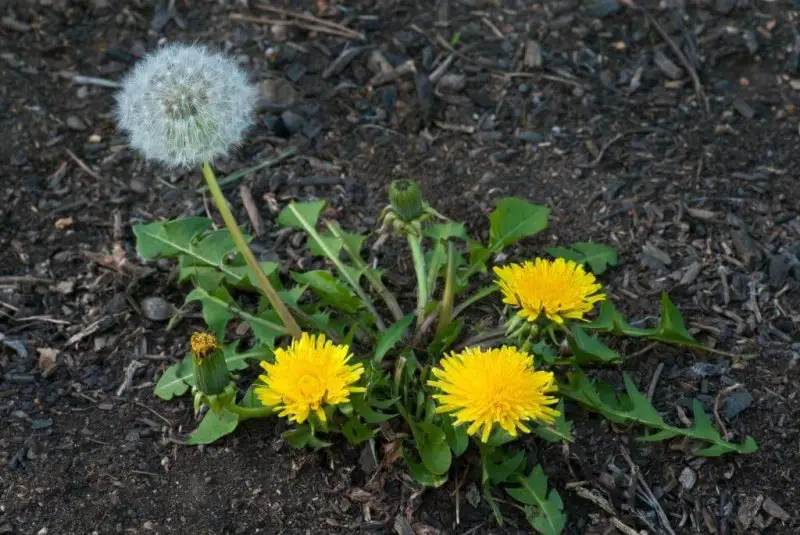
A ubiquitous plant with a yellow flower is totally edible raw, or cooked. Dandelion is popular in salads and teas, high in minerals, vitamins, and antioxidants.
2. Wild Asparagus
Thinner than cultivated asparagus, wild asparagus can be boiled, steamed, or eaten raw for a great source of vitamin C, potassium, Vitamin B1, and B6.
3. Chicory
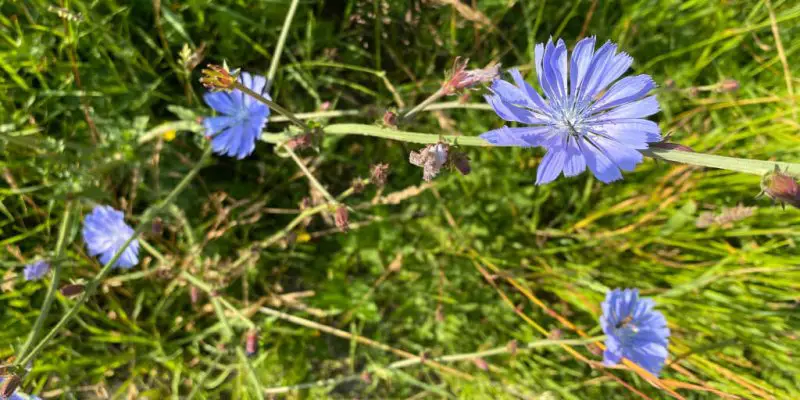
Though the flowers are overly bitter, the leaves are edible in salads, and the roots can be boiled and eaten or ground as a coffee substitute.
Chicory eases digestion, detoxifies the liver and gall bladder, reduces the risk of heart disease, and offers many other health benefits.
4. Clover
Often used in salads, clover is high in protein, vitamin V, the B vitamins, and beta carotene. It can be eaten fresh, boiled, steamed, or dried; the seed pods and clovers can make flour. Clover triggers allergies for some people, so try it first in small amounts.
5. Wild Garlic
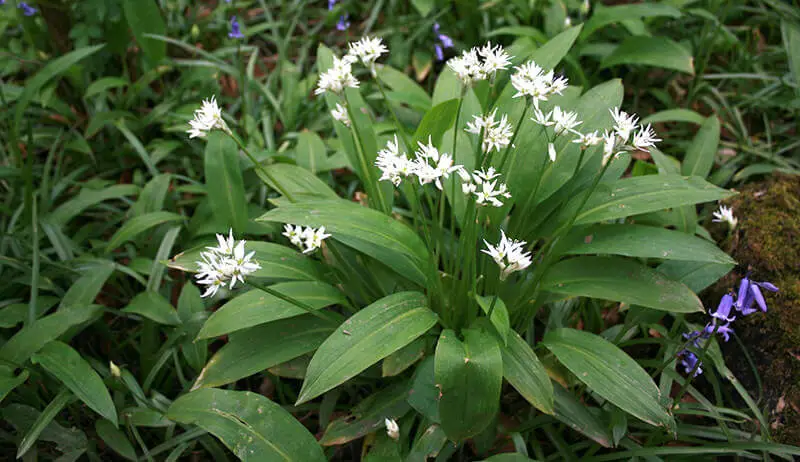
Adding spice to meals on the trail, wild garlic can be used in salads. It has antiviral, antibacterial, and antibiotic properties and can lower blood pressure.
6. Wild Carrot
Commonly called Queen Anne’s lace, wild carrot is soothing to the digestive tract. The roots smell like carrots, which distinguishes it from other poisonous variations.
7. Nettle
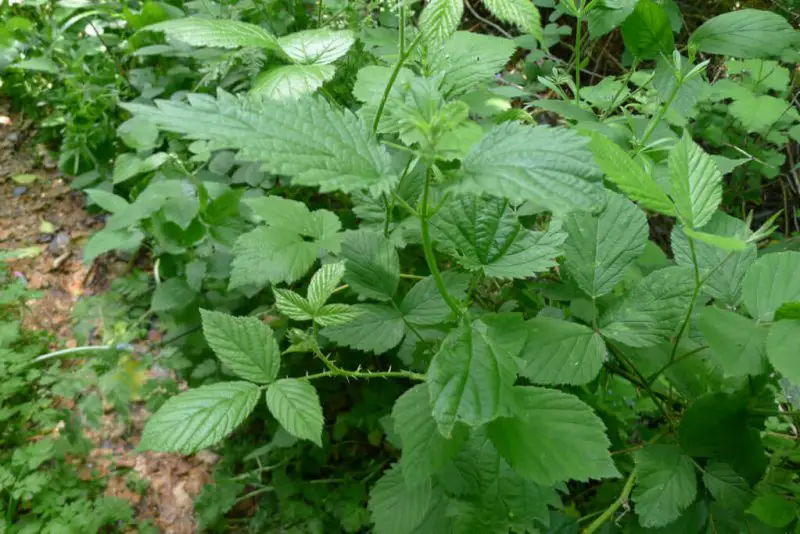
A good substitute for spinach or kale in salads when picked young, more mature nettle can be steamed, sautéed, or boiled for pies, casseroles, pasta, and stir-fries, or dried or tea. The stems are prickly, so foragers should wear gloves to prevent getting scratched.
8. Violets
Not related to African violets, which are poisonous, wild violets have lovely blue or purple flowers that are edible and full of vitamins A and C.
The blooms can be candied for snacking or cake décor or used to make syrups, brew teas, and in baked desserts.
9. Elderberry
Grown on bushes, elderberries are edible but tart. Full of potassium, iron, calcium, Vitamin B6, and Vitamin C, elderberries are excellent for tea and as remedies for colds and flu.
10. Garlic Mustard
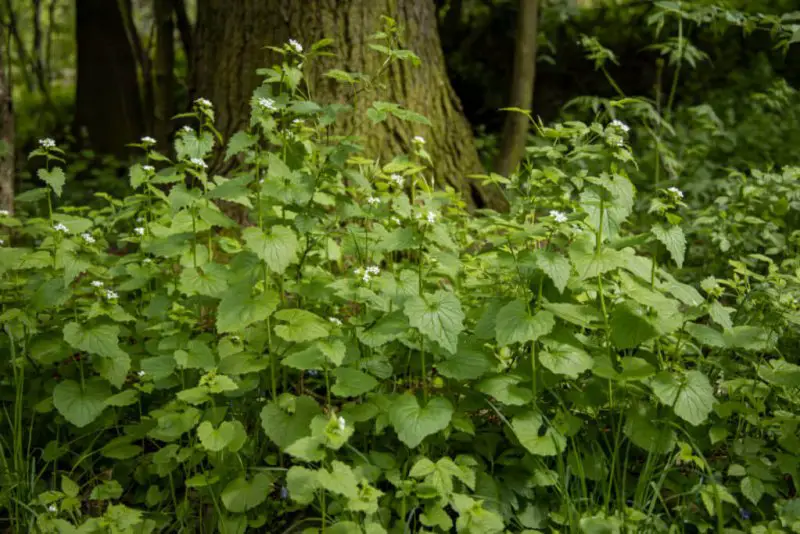
Offering a garlicky aroma and tasting not at all like mustard, garlic mustard greens are excellent in dips, sauces, salads, and stir-fries. While delicious, this plant is considered an environmental threat as it overtakes other plants and releases chemicals underground that inhibit the growth of trees and other plants.
The above list of edible plants represents a fraction of what is available in backyards, along roadsides, and in fields or forests.
Other common wild plants include:
- Bamboo
- Birch
- Black Locust
- Bracken Fern
- Chickweed (Stellaria Media)
- Cleavers/Bedstraw
- Curled Dock
- Henbit
- Ox-Eye Daisy
- Redbud Trees
- Service Berry
- Wild Bergamont
- Wild Raspberry
- Blueberries
- Wild Roses
- Yarrow
- Ostrich Fern
- Stinging Nettle
- Watercress
- Gooseberries
- Fiddleheads
- Cattail
- Burdock
- Lamb’s quarters
- Sorrel
How Can You Tell If Plants Are Safe To Eat?
Identifying safe plants vs. ones that are poisonous with any certainty can be challenging.
Foragers need to do plenty of research, bring the plants home before eating them to consult with someone knowledgeable, or take someone with them at first when picking wild plants as they learn how to find safe edibles.
To reduce the possibility that plants are poisonous, you should avoid those that have:
- Milky white sap
- Thorns, spines, or fine hairs on the leaves or stems
- Pods with bulbs, beans, or seeds
- Stems or trunks that have an almond scent
- Three-leaved foliage growth
- Pink, purple, or black spurs on the grain head
- Foliage reminiscent of dill, parsley, or carrot fronds
- Intensely bitter or soapy flavor
How Can You Test For Poisonous Plants?
Many toxic plants exhibit one or more of these characteristics, but a novice to foraging might not know the difference between what is dangerous and what is safe, delicious, and full of nutrients. Not even experienced foragers rely on appearance and careful visual inspection alone.
After rejecting known poisonous plants, you should use these steps from Goneferal.org to determine what is safe:
- Cut ¼” part of the plant and rub it on the inside of your bare wrist. Wait 20 minutes to see if you have a reaction before proceeding to step two.
- Rub the little piece of the plant along your gum line to see if the taste is palatable or if you have a reaction in the next 20 minutes.
- Place a tiny piece of plant on your tongue and let it sit for a minute without swallowing the juices or saliva. Discard the plant and wait an hour to see if you have a reaction.
- If not, chew a tiny piece of the plant and discard it. Wait another hour.
- Finally, eat a small portion of the plant to see if you have a reaction after an hour. If not, the plant is safe.
Testing a plant for the first time takes nearly 5 hours, but the long wait is worth it and will prevent an emergency room visit. Most poisonous plants won’t make it beyond the first couple of steps.
It’s a good idea to forage with an expert at first and always carry a field guide along with you to categorize the plants you come across.
Guide To Plant Families
So, you’re in a forest, hungry, and see a veritable buffet of plants before you. How can you even begin to identify them? The first step is to break them down by plant families.
If you use a field guide, knowing this information can help you find the plant you see more quickly.
Mint family
- Includes mint, spearmint, catnip, oregano, sage, thyme, basil, marjoram, and lavender
- Very aromatic
- Have square stems with opposite-branching leaves
- 3,500 edible species, though not all are palatable
- Antimicrobial properties
Parsley family
- Includes wild carrot (Queen Anne’s lace), parsnip, celery, anise, cumin, dill, and fennel — but also two of North America’s deadliest plants, Poison Hemlock and Water Hemlock (which resembles carrots)
- Umbrella-like head
- Hollow stalks with ferny leaves (usually)
Aster/Sunflower family
- Includes asters, dandelions, black-eyed Susans, gumweed, sagebrush, and daisies
- 19,000 species
- Disk-shaped flowerhead
- Multiple flowers though some types, such as sagebrush, lack noticeable petals
Pea family
- Includes peas, alfalfa, locust, mimosa, and bird-of-paradise trees
- 13,000 species
- Distinct-looking flowers with three parts banner, wings, and keel that hide the stamens
- Pea-like seed pods
- Compound or pinnate leave composed of smaller leaflets
Mustard family
- Common plants with 3,200 species, including radishes and other greens
- Size ranges from less than an inch to several feet high
- Flowers have petals arranged in an “X” or plus sign
- Have 6 stamens, with 4 long and 2 short ones
Grass family
- Includes grains such as corn, wheat, oats, rice, wild rice, rye, millet, barley, bamboo, and many other grassy variations
- 10,000 types, all edible, although ryegrass can be poisonous in excess
- Grass-like in appearance
- Have nodes along the stalk
Many wild plants are edible and would make interesting additions to a daily diet.
Finding safe, non-poisonous varieties in the Midwest is an acquired skill that takes practice, but the results can be delicious.





